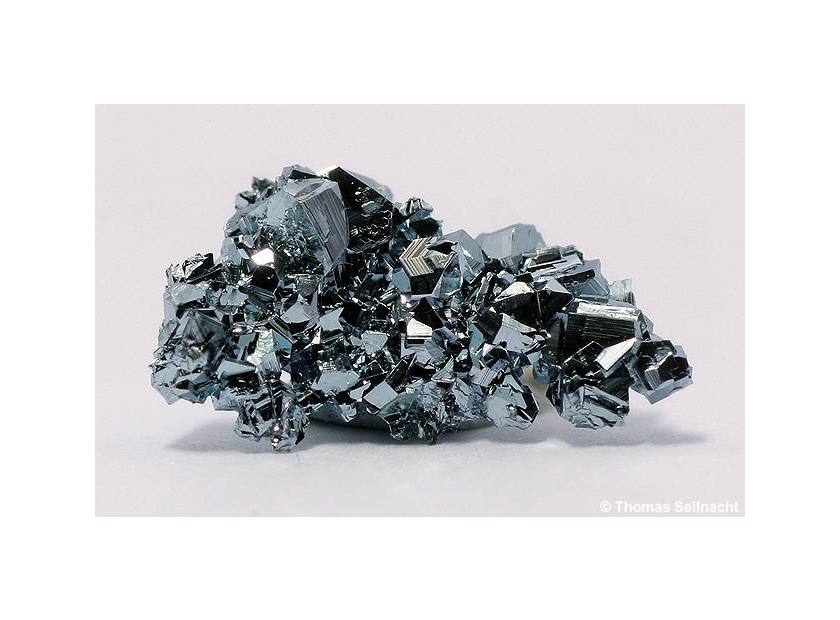Ruthenium Based Antibacterials - Can this be useful in the fight against resistant bacteria?

A team of researches at the University of Sheffield in South Yorkshire, England, have reported a new compound that displays the ability to kill both gram-positive and gram-negative antibiotic-resistant bacteria (1).
PhD student Kirsty Smitten, Principal Investigator Jim Thomas, and their team in the Department of Chemistry first published their findings in Chemical Science in October 2019. They described a dinuclear Ruthenium (RuII)-based antimicrobial theranostic that was "particularly active against pathogenic gram-negative bacteria"(2).
Ruthenium is a chemical element with the symbol Ru and atomic number 44. It is a rare transition metal belonging to the platinum group of the periodic table. Like the other metals of the platinum group, ruthenium is inert to most other chemicals.
Using super-resolution of STED (Stimulated Emission Depletion) nanoscopy and the inherent luminescent properties of these RuII complexes, Smitten's investigation confirmed that, white these compounds did show a high affinity to binding and damaging gram-negative bacterial DNA, the compounds tended to bind to the bacterial membranes first.
This slowed internalization and resulted in a lower amount of damage to the target DNA. New therapeutic opportunities were identified, especially when coupled with additional treatments that could increase the gram-negative bacterial target's internalization of these new theranostics.
Theranostics (a portmanteau of therapeutics and diagnostics) is process of diagnostic therapy for individual patients - to test them for possible reaction to taking a new medication and to tailor a treatment for them based on the test results.
Additional publications,however, showed that Smitten and her team continued with their work. In July 2020, the team again published in Chemical Science, reporting the development of a series of mononuclear RuII complexes that, unlike their dinuclear analogues, did not damage bacterial cell membranes and were rapidly taken up by both gram-negative and grampositive bacteria (3).
Continuing their use of STED nanoscopy and TEM microscopy, Smitten and her team were able to show that the internal target of these RuII complexes remained the bacterial DNA. Minimum Inhibitory (MIC) and bactericidal concentrations were comparable to that experienced by Ampicillin-sensitive bacterial strains, and this activity was retained even in resistant strains such as MRSA.
It is important to note that these RuII complexes showed exceptionally low toxicity toward the team's eukaryotic animal model, Galleria mellonella, even at concentrations that were orders of magnitude greater than the aforementioned MIC values.
The idea of mononuclear-RuII complexes used for therapeutic antibacterial use are quite promising. The class of DNAbinding antibacterials is quite small, with only Metronidazole and Nitrofurantoin available on the market at this time. An additional advantage of these theranostics would be in their ease of scale. Since they are relatively simple chemical complexes, they would not necessitate the intensive multistep synthesis required of therapeutics based on natural derivatives. Lastly, the expected eukaryotic toxicity of RuII compounds is quite low while still exhibiting broadspectrum antibacterial activity.
REFERENCES
- Scientists develop new compound which kills both types of antibiotic resistant superbugs, University of Sheffield, 4 Sep 2020
https://phys.org/news/2020-09-scientists-compound-antibiotic-resistant-superbugs.html - Ruthenium based antimicrobial theranostics – using nanoscopy to identify therapeutic targets and resistance mechanisms in Staphylococcus aureus, Smitten, Thomas, et al, 29 Oct 2019
https://pubs.rsc.org/en/content/articlehtml/2020/sc/c9sc04710g - Mononuclear ruthenium(II) theranostic complexes that function as broad-spectrum antimicrobials in therapeutically resistant pathogens through interaction with DNA, Smitten, Thomas, et al, 30 Jul 2020
https://pubs.rsc.org/en/content/articlehtml/2020/sc/d0sc03410j







